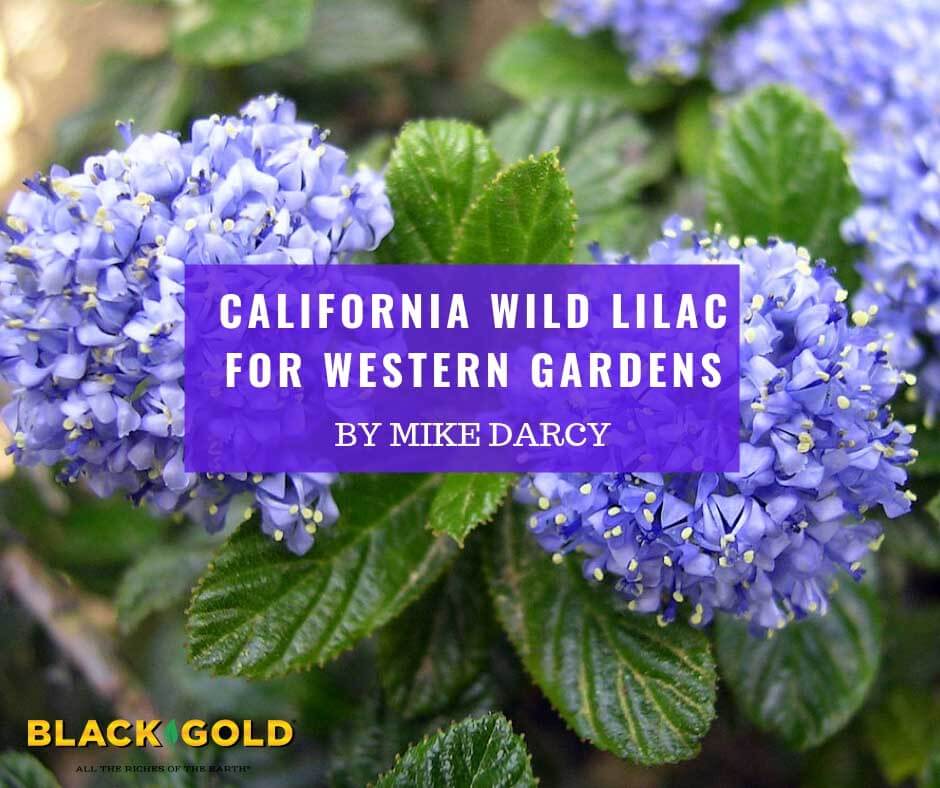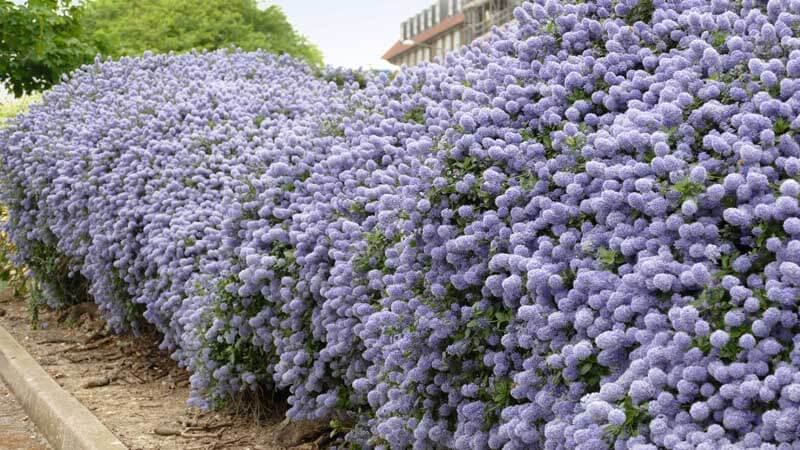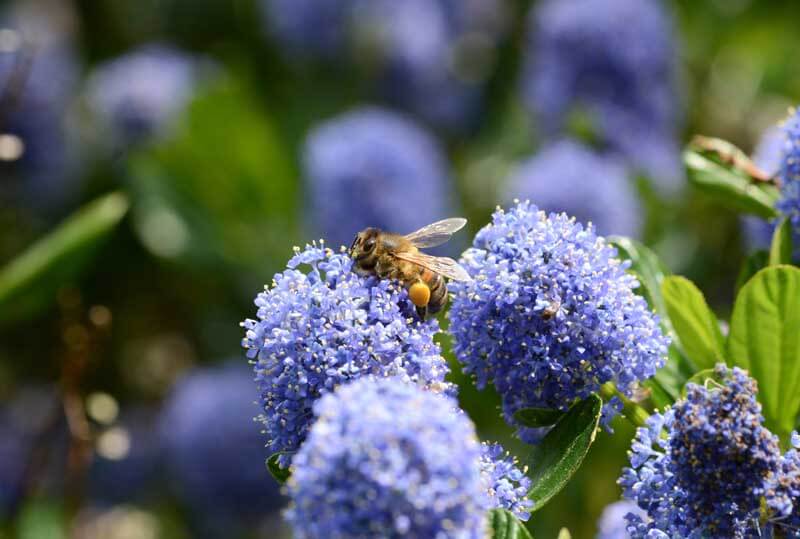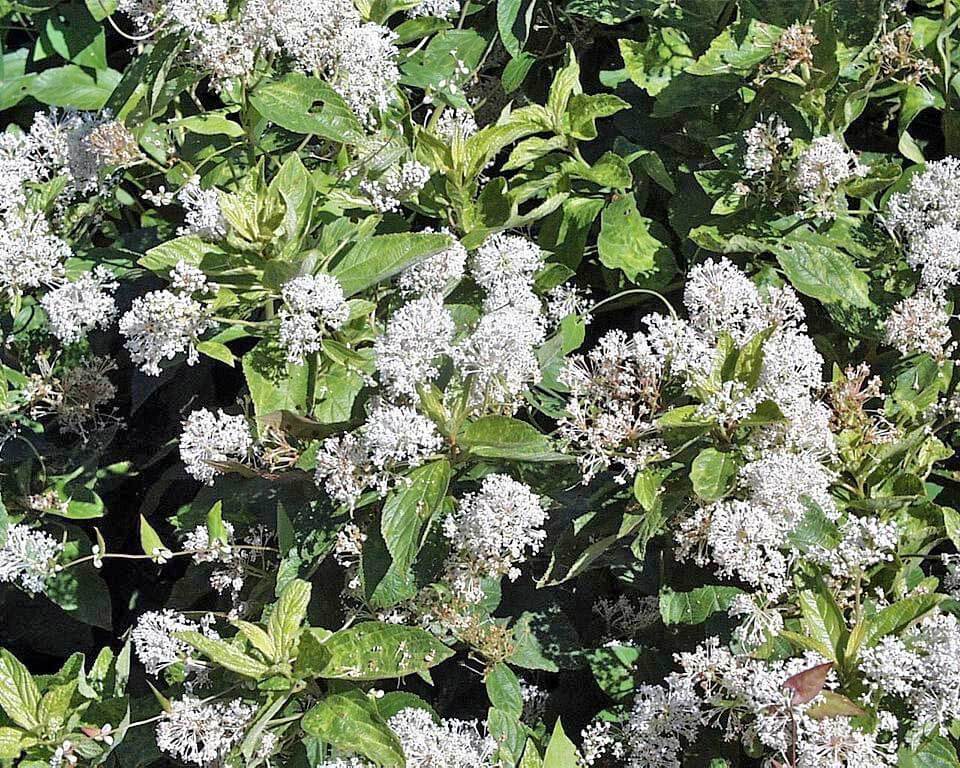
It is difficult to think of another plant genus that has the diversity of violet-blue flowers as Ceanothus. There are several species available to gardeners, but the most cultivated is Ceanothus thyrsiflorus (USDA Hardiness Zones 7-10). Most are native to California and are sometimes referred to as California wild lilac, but there are some native to Oregon and the Pacific Northwest. Unlike true lilacs, which are in the olive family (Oleaceae), these shrubs are in the buckthorn family (Rhamnaceae). Although the growing requirements of different species and varieties are diverse, as a group, and in our Pacific Northwest climate, most will thrive with little care once established. Generally, the crucial factor is providing them with well-drained soil.
California Wild Lilac Characteristics

Most Ceanothus bloom in spring and early summer with clusters of violet-blue flowers that range in color from light blue to sky blue to violet blue. The evergreen shrubs are generally not long-lived plants, surviving 10-15 years on average. In addition to their spectacular flowers, another attribute is that the plants fix nitrogen into the soil, and so planting them in the landscape helps improve soil nutrition. The flowers are also very attractive to honey bees, as well as native bees, butterflies, and hummingbirds. They prefer full sun but can withstand light shade, and once established they do not need summer water. They are truly low-maintenance, easy-care plants for the garden. Their growth habits are variable as there are some species that grow as ground covers and others that become large shrubs with heights reaching 10 to 12 feet.
These beautiful western natives require soil that is light and sandy or loamy with excellent drainage. They are not picky about soil pH. The addition of Black Gold Garden Soil at planting time will really help. Another benefit is that they are tolerant of salt spray but need to be protected from high winds. As the shrubs grow, pruning is often required for space consideration. The important thing to remember is that pruning must be done after the plant has bloomed.
California Wild Lilac Varieties

Luckily for gardeners, the California wild lilac varieties are available at local garden centers and have continually become more available over the past few years. When purchasing one, be sure to check the plant label or ask a knowledgeable nursery person, since their growth habits are so variable.
One of the most popular and widely planted Ceanothus in the northwest is Ceanothus thyrsiflorus ‘Victoria’. Originally found in Victoria, British Columbia, this shrub has glossy foliage and is good looking throughout the year. The flowers are sky blue and cover the plant from May to June and the shrubs will sometimes repeat bloom but are not as prolific as the first spring flowering. It is a tall shrub, in my garden reaching about 8 feet in height and almost as wide.
Ceanothus ‘Dark Star’ is one of the showiest hybrids with very small dark green foliage and a spreading habit (4 to 8 feet by 8 to 12 feet). The flowers are deep cobalt blue and stand out against the dark green foliage. This is a spectacular specimen plant for the spring garden. The flowering season is usually in April.
For a ground cover, Ceanothus gloriosus ‘Point Reyes’ is hard to beat. It will cover the ground densely with light-blue flowers in March. This is an excellent plant for steep banks or slopes and will usually not get much taller than about 1 foot. It is tough and heat tolerant, so it is often planted in the ‘hell strip’ area between curbs and sidewalks.

Some eastern Ceanothus are also available for gardeners in this part of the country. New Jersy Tea (Ceanothus americanus) is a very hardy deciduous species that survives in USDA Hardiness Zones 4-8 and can take partial shade. It has fragrant, white summer flowers that attract bees, and it only grows to 3- to 4-feet high. It is also tough and can be grown in the West.
Another for white flowers is Ceanothus cuneatus ‘Adair Village’, a cultivated variety of an Oregon native that has silver leaves and white flowers. It is fast growing, reaching about 8 feet at maturity, and requires no summer water. It is also a great pollinator plant, honeybees love it.
This brief listing of Ceanothus is just a sampling of the many species and varieties that are available. The ‘Victoria’ in my garden has never had a pest problem. I gave it supplemental water the first year and none thereafter. Check out your local garden center for prime Ceanothus because this is an excellent time to plant them.

